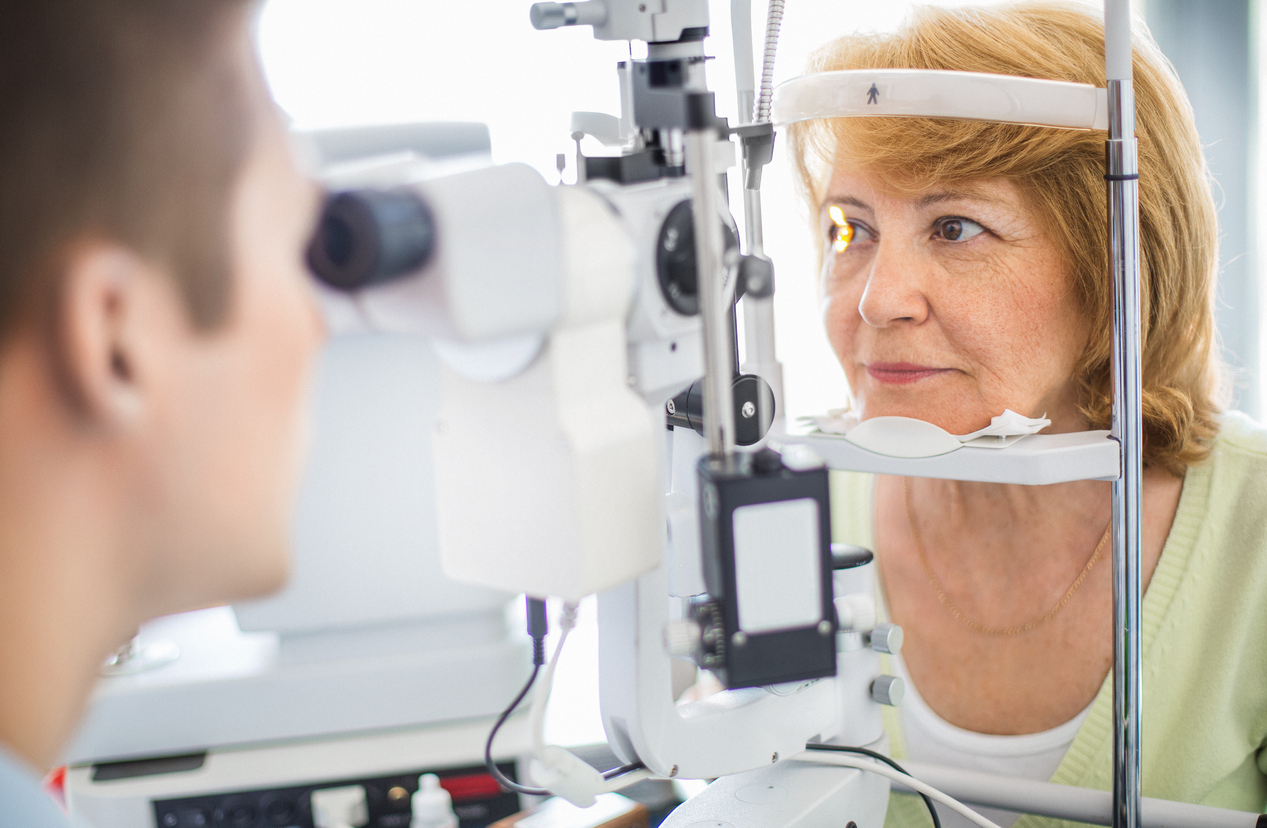Honoring National AMD Month: Symptoms, Prevention, and Who Is Most at Risk

Age-related macular degeneration (AMD) is of noted importance each February for good reason – around 11 million Americans have some degree of AMD. At its most severe, this condition can lead to permanent blindness. In more moderate cases, there are varying degrees of vision loss involved. The quality of your remaining vision, should AMD develop, will depend on a few different factors, which we will highlight for patients in detail below. It is important for everyone, especially those most at risk for AMD, to be aware of the condition’s symptoms and how to proactively work on preventing vision loss.
What is AMD?
AMD occurs when the macula, or the central area of the retina, deteriorates. The macula is a very important part of the retina because it is used when we are completing visually demanding tasks (determining colors, reading, driving, facial recognition, etc.). There are two types of AMD: dry and wet. Dry is the most common form of the condition, with a slower degree of vision loss because the cells within the macula are becoming less sensitive over time. Wet AMD is the next level of dry AMD, in which abnormal blood cells develop under the macula and then leak/bleed fluid, which causes vision loss.
Am I at risk for developing AMD?
Because macular degeneration is so closely linked to a person’s age, those age 60 and older are most at risk for the condition – even if you have enjoyed quality vision in your life thus far. Not every person age 60 will develop AMD; it is simply a matter of increased statistical risk. Additionally, your risk level can increase if you use tobacco products (smoke cigarettes), have high blood pressure, have a diet high in fats, have high cholesterol, and/or have atherosclerosis (plaque buildup within the arteries).
What are the symptoms of AMD? And when should you contact a retina specialist?
Symptoms of AMD can resemble the following:
- A blurry or blind spot in your vision
- Colors appear dimmer/less bright
- Difficulty reading
- Trouble adapting to changes in light (coming inside after being outside)
- A need for brighter lighting while reading or working on an electronic device
- Trouble recognizing faces
- Lower-quality central vision
- Distorted vision (a straight line appears bent or wavy)
How can I work to prevent AMD?
While there are some treatments available for AMD, there is no cure. So it can be difficult to repair vision loss once it has already occurred. This means that it is critical to prevent AMD whenever possible. A healthy, consistent lifestyle is key. This means no smoking, regular exercise, a normal blood pressure range, a healthy weight, a balanced diet low in fat, and proper eye protection while outdoors or doing any activity that could risk your vision.
If you are unsure how to work toward a healthier lifestyle in a way that is realistic for your goals, please consider connecting with your GP. He or she can help determine a plan and also recommend a nutritionist or medication if needed.
Treating AMD
The number of people in the US who have AMD is expected to double within the next three decades. When your vision is at stake, so is your quality of life. If you are at risk for AMD, have symptoms, or have questions about prevention, please contact our specialists today so we can assist. As noted, there is no cure for the condition, but we can work toward stopping or slowing down vision loss where possible and repairing when an option.

